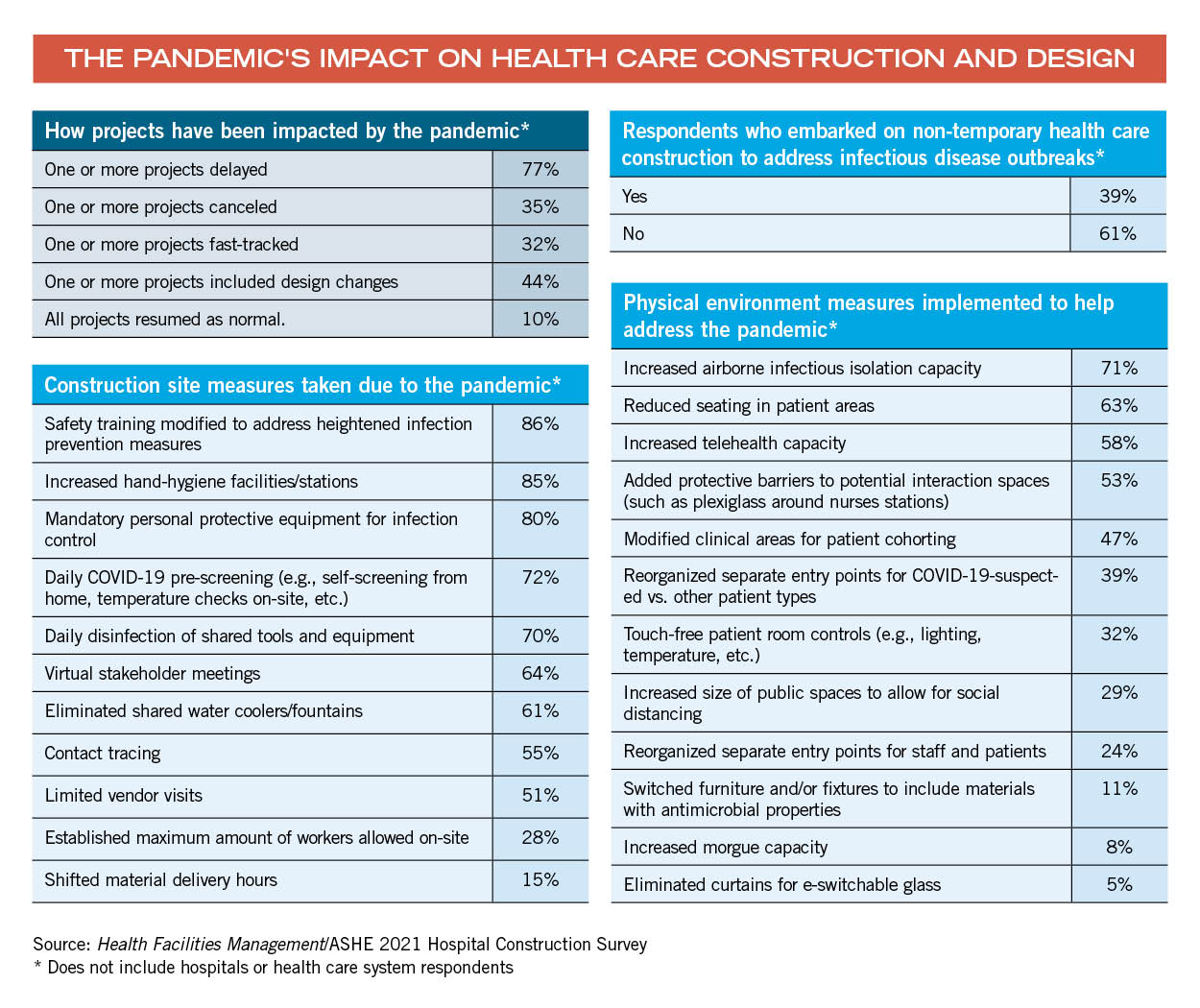Health care contractors and designers sound off on the effects of the pandemic
Like the rest of the world, contractors caught off-guard by the enormity of COVID-19 didn’t have much time to react. After taking a deep breath, they immediately began to set priorities.
“Our focus has always been on safety,” says Adam Ashouri, senior project manager at Messer Construction Co. and a member of the American Society for Health Care Engineering’s (ASHE’s) Young Professionals Committee. “How are we going to keep people working in this facility safe and patients safe? That remains our top priority.”
At the beginning of the pandemic when scientists weren’t exactly sure what they were dealing with and safety protocols were still evolving, moving forward with construction wasn’t possible for many hospital projects. And the numbers bear that out.
Roughly 77% of contractors and designers participating in the 2021 Hospital Construction Survey conducted by ASHE’s Health Facilities Management magazine said one or more projects that began pre-pandemic had been delayed due to COVID-19. Some 35% said at least one project had been canceled. The vast majority of projects in both categories were renovations.
But that also means that many hospitals went ahead with construction projects as scheduled. In fact, Ashouri says he didn’t see a drastic drop-off in hospital projects — just a complete overhaul of the on-site safety process.
Contractors adhered strictly to Centers for Disease Control and Prevention protocols for personal protective equipment (PPE), social distancing, contact tracing and closely monitored each employee’s health. They often made changes to crew sizes and schedules to decrease infection risk.
“In my experience, it wasn’t that workers were not coming in,” Ashouri says. “It was more that we made sure we were erring on the side of caution when we were on-site. It was a strict process of testing, asking about symptoms and contact tracing if someone did test positive. We are extremely dedicated to safety.”
Because so many of the measures used during the design and construction process during the pandemic have been so effective, hospitals are planning to keep a number of them for the foreseeable future. The survey shows hospitals plan to keep safety training related to infection control, increased hand-hygiene stations, PPE for infection control staff, virtual stakeholder meetings, daily disinfectant of shared tools and equipment, and contact tracing.
In terms of design elements developed to address the pandemic, hospitals plan to keep increased airborne infectious isolation capacity, reduced seating in patient areas, increased size of public spaces to allow for social distancing and increased telehealth capacity. In addition, facilities may have to rethink aesthetic touches that can create infection control concerns.
Hospitals also are incorporating lessons learned from COVID-19 when planning new construction. About 40% of architect and constructor survey respondents said they have initiated projects designed to handle a future infectious disease outbreak.
“The types of permanent facilities we are building as a result of COVID-19 are larger intensive care units, infrastructure to provide more oxygen and ventilators, observation units and more isolation rooms,” says Patrick Rhinehart, CSP, CHFM, an environment of care/life safety system manager at Northside Hospital, Atlanta.
Going forward, contractors and designers will be examining what they learned. “We are a part of a group consisting of architects and builders who have been meeting on a regular basis to discuss lessons learned,” said one respondent.


